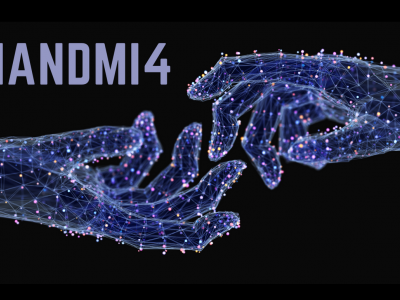Wearable Sensing
Wearable long-term monitoring applications are becoming more and more popular in both the consumer and the medical market. In wearable ECG monitoring, the data quality depends on the properties of the electrodes and on how they contact the skin. Dry electrodes do not require any action from the user. They usually do not irritate the skin, and they provide sufficiently high-quality data for ECG monitoring purposes during low-intensity user activity. We investigated prospective motion artifact–resistant dry electrode materials for wearable ECG monitoring.
- Categories:
 158 Views
158 Views
Supplementary material for the article "Three-electrode double-differential biopotential amplifier for surface EMG measurements". Connection diagrams, intermediate results, images of the designed prototype and a video of the working prototype are presented.
- Categories:
 128 Views
128 ViewsThe main objective of this project is to design and develop a collaborative framework which facilitates real-time tracking of a target person even when GPS signal is not available, while collecting motion data to infer his or her lifestyle and health status. The framework orchestrates a wide range of technologies such as localization technologies, machine learning and AI, sensor data analytics and cloud computing. The overall framework design also takes into consideration the culture, lifestyles, behaviours and infrastructures of ASEAN countries.
- Categories:
 574 Views
574 ViewsThe dataset contains motion capture data of the human hand of 20 healthy subjects acquired using two different motion capture technology (wearable IMU and camera-based). This database provides an opportunity to expand the fields of research involving the hands or their range of mobility. Indeed, using this database to train AI's net to recognise gestures/tasks is an excellent beginning point for expanding the field of human-robot collaboration.
- Categories:
 1033 Views
1033 Views
This dataset is made of the Channel Impulse Response (CIR) data collected in 9 different environments in Ghent city, Belgium. These environments include:
1. Fourth floor at iGent Tower in the premises of Gent University
2. Zwijnaarde Open Area
3. Stadhuis Street and Nearby
4. Zuid Mall
5. Portus Ganda
6. Sint-Pieters Railway Station
7. Krook library
8. Citadel Park
9. Graffiti Straat
- Categories:
 638 Views
638 Views
This dataset contains the raw data to figure 6 of the paper "Modeling and evaluation of a rate-based transcutaneous blood gas monitor" that has been submitted to IEEE Transactions on Biomedical Engineering
- Categories:
 155 Views
155 Views
20 falls and 16 daily living activities were performed by 17 volunteers with 5 repetitions while wearing 6 sensors (3.060 instances) that attached to their head, chest, waist, wrist, thigh and ankle.
- Categories:
 298 Views
298 ViewsDriving practices while HR physiology and pre- and post-EDA were acquired. Stress levels are also rated on a 1-5 scale. The gamer's steering wheel angle, pedals, and steering wheel buttons associated with the driving activity are tracked every 10 msec. The normalized data were stored in Figure 1 in the .xlsx file. Using the Balanced Latin Square method, participants develop each level to avoid level learning when designing experiments with multiple conditions.
- Categories:
 993 Views
993 Views
This dataset contains 223 sign language sentence samples collected from 20 volunteers with different levels of sign language execution, and each sample contains an sEMG signal sample and an IMU signal sample file, located in the emg subdirectory and the imu subdirectory, respectively.
- Categories:
 139 Views
139 Views
The popularity of wearable physiological recording devices has opened up new possibilities for the assessment of personality traits in everyday life. Compared with traditional questionnaires or laboratory assessments, wearable device-based measurements can collect rich data about individual physiological activities in real-life situations without interfering with normal life, enabling a more comprehensive description of individual differences. The present study aimed to explore the assessment of individuals’ Big-Five personality traits by physiological signals in daily life situations.
- Categories:
 351 Views
351 Views

